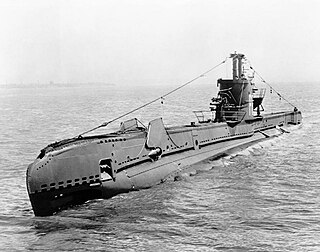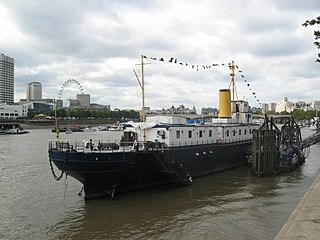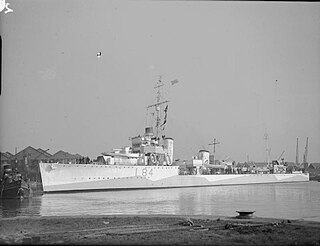At least five ships and one shore establishment of the Royal Navy have been named HMS Warrior:
Five ships of the Royal Navy have been named HMS Serapis, after the god Serapis of Hellenistic Egypt.
Five ships of the Royal Navy have been named HMS Herald:
Thirteen ships of the Royal Navy have been named HMS Shark after the shark:

The S-class submarines of the Royal Navy were originally designed and built during the modernisation of the submarine force in the early 1930s to meet the need for smaller boats to patrol the restricted waters of the North Sea and the Mediterranean Sea, replacing the British H-class submarines. As part of the major naval construction for the Royal Navy during the Second World War, the S class became the single largest group of submarines ever built for the Royal Navy. A total of 62 were constructed over a period of 15 years, with fifty of the "improved" S class being launched between 1940 and 1945.
Three ships of the Royal Navy have borne the name HMS Abdiel, after Abdiel, a seraph in Milton's Paradise Lost.
Six ships of the British Royal Navy have been named HMS Boyne after the Battle of the Boyne, 1690.

HMS Caroline is a decommissioned C-class light cruiser of the Royal Navy that saw combat service in the First World War and served as an administrative centre in the Second World War. Caroline was launched and commissioned in 1914. At the time of her decommissioning in 2011 she was the second-oldest ship in Royal Navy service, after HMS Victory. She served as a static headquarters and training ship for the Royal Naval Reserve, based in Alexandra Dock, Belfast, Northern Ireland, for the later stages of her career. She was converted into a museum ship. From October 2016 she underwent inspection and repairs to her hull at Harland and Wolff and opened to the public on 1st July 2017 at Alexandra Dock in the Titanic Quarter in Belfast.

HMS Saxifrage was launched in 1918 as a Flower-class anti-submarine Q-ship. She was renamed HMS President in 1922 and moored permanently on the Thames as a Royal Navy Reserve drill ship. In 1982 she was sold to private owners, and having changed hands twice, now serves as a venue for conferences and functions, and serves as the offices for a number of media companies. She is now called HQMS President (1918) to distinguish her from HMS President, the Royal Naval Reserve base in St Katharine Docks. She is one of the last three surviving Royal Navy warships of the First World War. She is also the sole representative of the first type of purpose built anti-submarine vessels, and is the ancestor of World War II convoy escort sloops, which evolved into modern anti-submarine frigates.
Two ships of the Royal Navy were named HMS Saxifrage after the genus of holarctic perennial plants:

The Thornycroft type leader or Shakespeare class were a class of five destroyer leaders designed by John I. Thornycroft & Company and built by them at Woolston, Southampton for the Royal Navy towards the end of World War I. They were named after historical naval leaders. Only Shakespeare and Spenser were completed in time for wartime service. The other three were completed after the war, Broke and Keppel after being towed to Royal dockyards for completion, and two further ships - Saunders and Spragge - were cancelled. The function of a leader was to carry the flag staff of a destroyer flotilla, therefore they were enlarged to carry additional crew, offices and signalling equipment, allowing a fifth gun to be carried. These ships were very similar to the Admiralty type leader, but had broad, slab-sided funnels characteristic of Thornycroft designs.
Sixteen ships of the Royal Navy have been named HMS Success, whilst another was planned:
HMS Bootle has been the name of two Royal Navy vessels, after the English town.

The 24 class was a class of minesweeping sloops. They were derived from the preceding Flower-class sloop, but designed to appear double-ended. Twenty-four ships to this design were ordered between December 1916 and April 1917 under the Emergency War Programme for the Royal Navy in World War I, although two of them were cancelled before launch. All were named after famous racehorses, but they were not named Racehorse class as the Admiralty realised that this could easily be confused in communications with the Racecourse class of paddle minesweepers, and they officially became the 24 class.
Thirty-nine vessels of the Royal Navy and its predecessors have borne the name Swallow, as has one dockyard craft, one naval vessel of the British East India Company, and at least two revenue cutters, all after the bird, the Swallow:
Five ships of the Royal Navy have borne the name HMS Trusty:
Five ships of the Royal Navy have borne the name HMS Childers:

The Arrogant-class cruiser was a class of four protected cruisers built for the British Royal Navy at the end of the 1890s. One ship, HMS Gladiator, lost following a collision with a merchant ship in 1908, while HMS Vindictive saw active service in the First World War, taking part in the Zeebrugge Raid in April 1918 before being sunk as a blockship during the Second Ostend Raid in May 1918.
HMS Tilbury is the name of several ships of the Royal Navy.
James Joseph Colledge was a British naval historian, author of Ships of the Royal Navy, the standard work on the fighting ships of the British Royal Navy from the 15th century to the 20th century.

Ships of the Royal Navy is a naval history reference work by J. J. Colledge (1908–1997); it provides brief entries on all recorded ships in commission in the Royal Navy from the 15th century, giving location of constructions, date of launch, tonnage, specification and fate.

The International Standard Book Number (ISBN) is a numeric commercial book identifier which is intended to be unique. Publishers purchase ISBNs from an affiliate of the International ISBN Agency.










